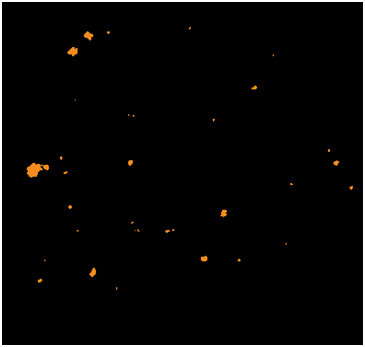Journal of
eISSN: 2373-633X


Research Article Volume 9 Issue 5
Headquarters of the State Educational Establishment of the City of Nizhny Novgorod, Russia
Correspondence: Martynov VL, Headquarters of the State Educational Establishment of the City of Nizhny Novgorod, Russia
Received: September 03, 2018 | Published: September 6, 2018
Citation: Martynov VL, Kurilov VA. New method of diagnostics and surgical correction of hypo and a vitaminos “C”. J Cancer Prev Curr Res. 2018;9(5):215-216. DOI: 10.15406/jcpcr.2018.09.00353
Ascorbic acid is an indispensable participant in most metabolic processes.1 It passively absorbed in the intestine (diffusion, osmosis) par with water and chlorides, but it is possible, and active transport of vitamin analogously glucose transport.2 When insolvency bauginievoy flap (NBZ) and the development of the syndrome of excessive microbial colonization of the intestinal absorptive function suffers from the latter, in particular developing beriberi "C".
One of the objective and accessible screening methods for determining the deficiency of the vitamin "C" was the setting of a canal test for the resistance of capillaries.3 The occurrence of petechial rash after this test allowed to judge the presence and extent of hypovitaminosis. The appearance of petechiae, their size and shape are determined by the degree of "vulnerability" to the wall of the capillaries of the dermis.4 In the body there is a strong direct positive relationship between the degree of strength of capillaries and the level of vitamin "C" in the blood.5 We have proposed a method for determining the C-vitamin status of the apparatus by a capillaryresistometer. The principle of the device is as follows. When creating a negative pressure inside a special nozzle applied to the skin of the forearm, petechia of different size and shape appear. The size and shape determined by the degree of petechiae "vulnerability" capillary walls of the reticular dermis, which in turn is closely related to the level of vitamin "C" in the blood.
Objective to create an apparatus for determining kapillyarorezistometr "C" state-vitamin in an insolvency bauginievoy valve patients and after the correction.
We developed the instrument (RF patent for utility model number 87889 "Kapillyarorezistometr" from 19.01.2009) consists of the following elements forming a closed environment at work: a metal cap on the skin; differential pressure gauge; discharge system. At the same time, the characteristics of the nozzle correspond to the characteristics of the glass jar (the inner diameter of the funnel is 15.8mm), which makes it possible to apply standard data (Table 1) to evaluate the results obtained.
The electronic manometer "Testo 506", manufactured in Germany, certificate No. 23187, registration number 177270-06 is used as a differential pressure gauge, the measuring range is +/- 2 atm. The gauge displays the load cell readings in 6measuring units (mm Hg, mm Hg, Atm, Pa, etc.). The manometer by means of plastic tubes is connected through a tee to the system, followed by measuring the pressure during the sample. As a discharge system, the Janet syringe and the holding rod are used to maintain a constant level of vacuum in the system. The general view of the device and its functional elements is shown in Figure1.
The capillary resisto meter is used as follows: when a metal nozzle is applied to the inner surface of the upper third of the patient's forearm, the air is sucked from the closed system of the instrument tubes using a syringe. The degree of discharge is controlled by an electronic differential pressure gauge. When the desired pressure is reached in the system (240mm Hg), a clamp is placed on the tube connecting the nozzle and the syringe. It lasts 3minutes. When the system is accidentally depressurized (as evidenced by the change in pressure), the nozzle is applied to the skin of the system again. After expiration of the exposure, the discharge stops, the device is removed from the patient's skin. The result is recorded and its subsequent

Figure 3 Petechia morphometry using the Image Tool v. 3.0 (final): the result of computer processing of the image of petechiae.
Index |
Degree of strength of capillaries |
Condition of C-vitamin nutrition |
Up to 15 small hemorrhages |
1 |
Normal |
15-30 small and medium hemorrhages |
2 |
Pre- and gipovitaminoznoe |
From 30 and more small, medium and large hemorrhages to a continuous draining hemorrhage |
3 |
Hypo-and beriberi |
Table 1 Evaluation of the results of a can sample
We conducted tests for the resistance of capillaries using the developed instrument and the scheme in 30 patients with a proven NCD. All of them had hypovitaminosis "C", and in 17 patients the severity of hypovitaminosis "C" was assessed as moderate and severe. We also studied the "C" -worm status in 14 patients in the long-term (1 to 2years) after the buginoplasty. In 9 patients, hypovitaminosis was absent, in 5 patients had mild severity.
None.
Author declares that there is no conflict of interest.

©2018 Martynov, et al. This is an open access article distributed under the terms of the, which permits unrestricted use, distribution, and build upon your work non-commercially.